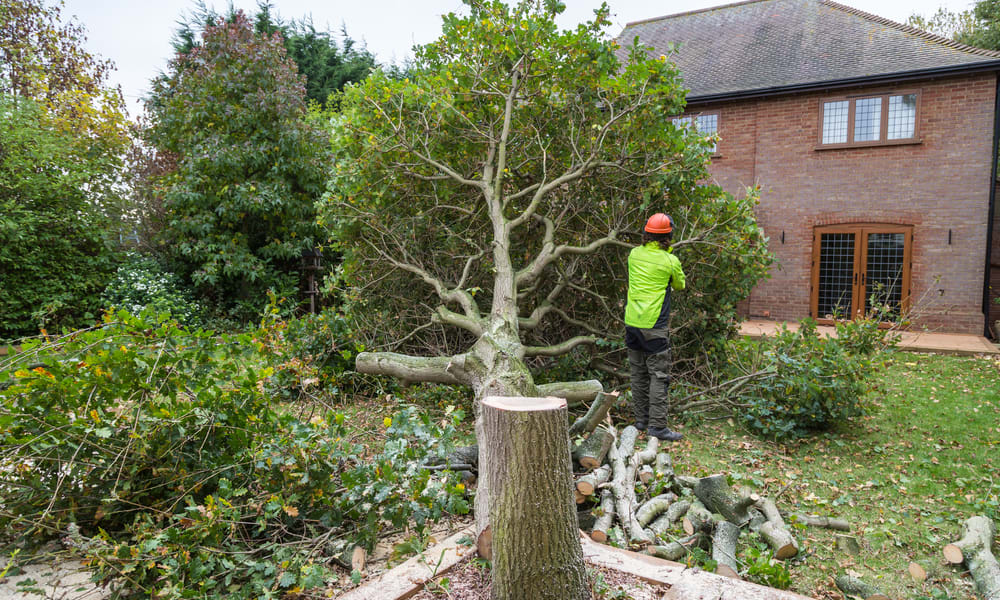Optimal Timing, Costs, and Tips for Trusted Tree Trimming Services in the United States 2025
Choosing the right time to trim trees affects both their health and your property’s safety. This article explains when to prune different species, what factors drive tree trimming costs, and how to find reputable, licensed professionals across the United States so you can maintain healthy trees.

When Is the Optimal Time for Tree Trimming?
In the United States, the best time to trim trees is typically from late winter to early spring. Trees are dormant during this period, experiencing less stress, and it’s easier to assess the branch structure since leaves are absent. This timing encourages healthy regrowth in spring, promoting vigorous new shoot development.
That said, some species require different timing:
- Spring-Flowering Trees: Species such as dogwood, magnolia, and cherry are best pruned right after blooming in spring. This practice protects next year’s flower buds and supports vibrant flowering seasons ahead.
Trimming frequency also varies by tree type:
- Mature Trees: Usually trimmed every 3 to 5 years.
- Young Trees: Benefit from trimming every 2 to 3 years to aid structural strength.
- Fruit Trees: Often need annual trimming to optimize health and fruit production.
- Evergreen Trees: Tend to require trimming less frequently, sometimes over several years.
Recognizing these seasonal and species-specific factors helps maintain tree well-being and enhances safety around your property.
What Influences the Cost of Tree Trimming Services?
In 2025, tree trimming expenses across the United States vary broadly due to several factors. While costs differ by region and service provider, understanding the main pricing drivers assists homeowners in budgeting effectively.
Key factors impacting cost include:
- Tree Size: Height and trunk diameter heavily affect pricing. Larger trees demand specialized equipment like bucket trucks and have higher safety risks, resulting in greater labor and equipment expenses.
- Location and Accessibility: Trees situated near power lines or buildings require extra safety measures, raising complexity and costs. Limited space restricting equipment use may also increase charges due to more manual labor.
- Tree Health: Diseased, damaged, or pest-affected trees might be unstable, requiring additional precautions and thus higher costs.
- Geographic Region: Urban settings usually have higher labor and operational costs compared to rural or small towns, which affects overall service prices.
- Number of Trees: The amount of trees scheduled for trimming can influence total pricing, as professionals often charge per tree.
Average Cost Estimates
- Small Trees: Generally, trimming starts at a relatively low cost because they are easier to manage.
- Medium Trees: Professional trimming costs typically fall into a mid-range bracket applicable to most residential trees.
- Large Trees (over 60 feet tall): These are more expensive jobs, often significantly above average prices due to the need for advanced equipment and careful risk management.
Disclaimer: Pricing and availability depend on location, service provider, and current offers. It’s advisable to confirm costs with local companies before proceeding.
Strategies for Finding Trustworthy Tree Trimming Services
Ensuring you hire competent and dependable tree trimming experts is crucial for tree health and safety. Apply these approaches to locate reputable providers nearby:
- Request Recommendations: Begin by consulting friends, family, or neighbors who’ve recently used tree services. Personal referrals often lead to dependable companies.
- Review Online Feedback: Use platforms such as Google Reviews to access unbiased customer opinions, helping you shortlist providers based on satisfaction and experience.
- Confirm Certification and Licensing: Reliable companies employ certified arborists and hold proper licenses to meet local legal requirements.
- Check Insurance Coverage: Liability insurance and workers’ compensation are essential for protecting you against accidents or damages during the work.
- Evaluate Equipment and Safety Standards: Reputable firms utilize up-to-date, well-maintained tools and adhere to strict safety protocols, including protective gear for workers.
- Request Multiple Detailed Estimates: Obtain written quotes from at least three companies to compare pricing, scope, and contract details thoroughly.
- Assess Reputation and Customer Service: Contact previous clients and references to verify punctuality, quality of work, reliability, and cleanup policies.
Additional Useful Advice for Tree Trimming Projects
- If trees grow near power lines, first contact your local utility company, many of which offer free safety trimming.
- Consider selecting companies that also provide related services like stump removal to streamline maintenance.
- Always prioritize a company’s reputation and qualifications over the lowest bid to prevent risks and future expenses.
- Understand the distinction between trimming (improving appearance) and pruning (enhancing health), since these services may differ in method and cost.
- Regularly monitor your trees’ health year-round to schedule timely maintenance.
Importance of Regular Tree Trimming
Routine tree trimming supports healthy growth, reduces disease risk, improves fruit yield, and minimizes hazards such as falling branches. Properly maintained trees also boost your property’s curb appeal and value. Partnering with qualified professionals who follow best practices ensures long-term advantages for your landscape.
Sources
- LawnStarter - How Much Does Tree Trimming Cost in 2025?
- Eduardo’s Tree Service - 5 Tips for Choosing the Right Tree Trimming Service
Disclaimer: Pricing estimates and service availability cited in this article differ by region, provider, and current market trends in the United States. Consumers should conduct independent research and consult local professionals for the most accurate, personalized information.




